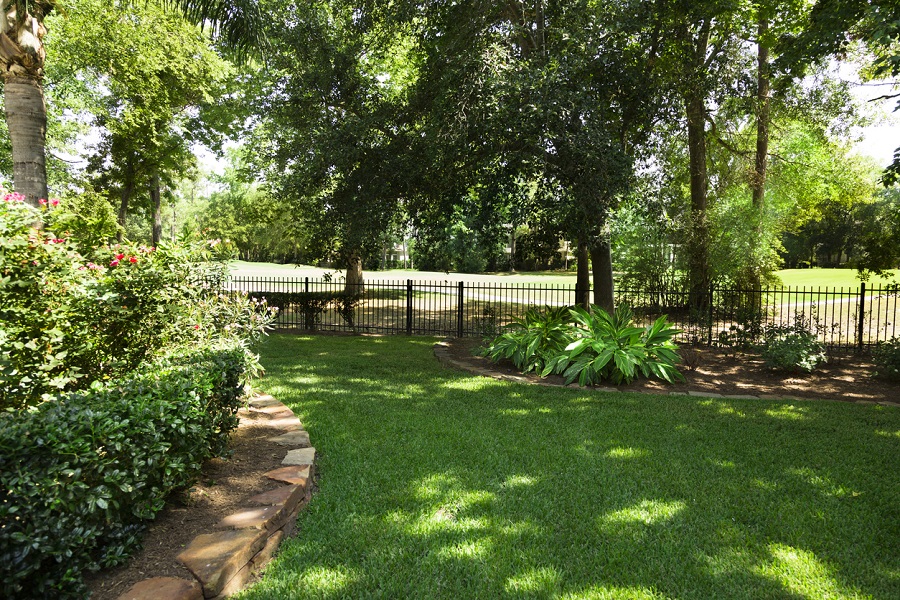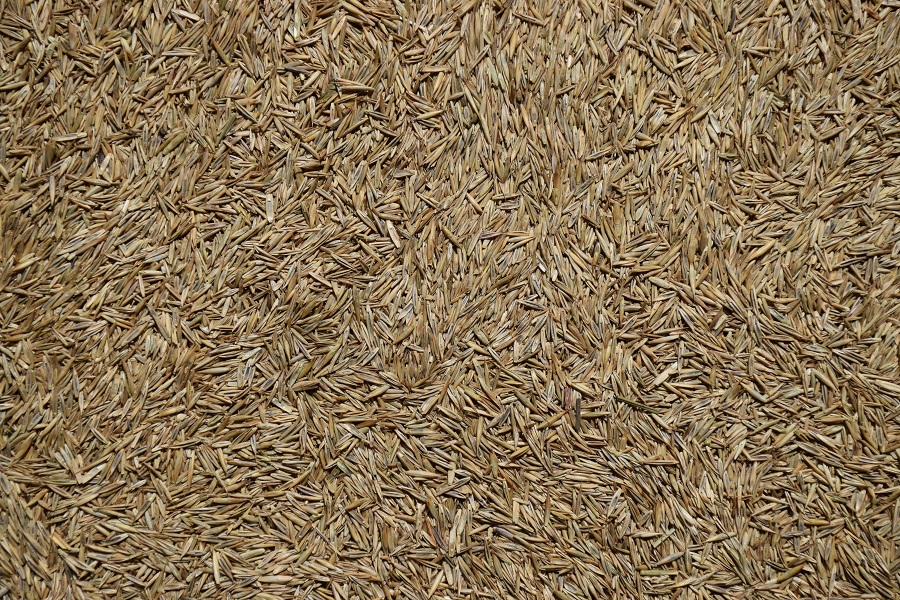Ahhhh, summer! The time for outdoor weddings or graduation parties, family vacations, barbecuing with the neighbors or in-laws…and mowing the lawn! I think one of my favorite smells in the late spring is the smell of fresh cut grass. It brings to mind all those bright summer days and sultry summer nights that are headed my way.
Summer also brings with it the necessary maintenance that comes with having a lawn. Drive through any neighborhood or cruise along any rural road and you’ll see the gamut: beautiful lawns worthy of the cover of “Turf Management” and weedy, patchy lawns that should probably get a full makeover.
How do those people with the perfect lawns do it? Is it as easy as many of them say? I have a lawn that I’m not happy with – what do I have to do to improve it? If you have these questions, then this article is for you. We’re not going to promise that you can achieve the perfect lawn without a little effort, but we will share some tips and maintenance philosophies that will help you find a good balance.

Tip #1: Know Your Maintenance Style - Set Realistic Expectations for Your Lawn!
If you call our customer service number and ask one of our agronomists, “What do I have to do for the perfect lawn?”, we’re probably going to tell you, first and foremost, to set realistic expectations for how much time (and money) you want to spend caring for your lawn.
Those perfect lawns that you see when you drive around neighborhoods are likely a) NOT low maintenance and b) NOT the product of just paying a company to come out and apply chemicals every now and then. Honestly, the perfect looking lawns come about for a variety of reasons (which we’ll highlight below). But guaranteed in every case, it’s because the home-owner (or land manager) is invested in making sure the lawn looks darn good.
In other words: they’re out there mowing at the right time, mowing in the right way, selecting seed species that complement their soil type and regional climate, getting soil tests every few years, applying specific amounts of fertilizers and pesticides at the right time, and generally doing what a lot of other folks would call “obsessing” about their lawn.
Is it obsessive to spend several hours per week researching how to plant turf seed successfully, how to take lawn soil tests, how to apply fertilizers in specific amounts, how to mow at the right time of day and with the right deck height for shaded areas versus sunny areas…and I could go on and on? Nope! It’s called a hobby! I spend several hours per week in my garden obsessing over my vegetable plants and fruit trees and it makes me very happy.
What’s my point here behind these rambling lists of lawn care topics? If you love having a perfect looking lawn and you’re willing to expend the energy, time, and money to do it – there’s nothing wrong with that! Chances are also very high that if you’re that type of lawn-aficionado, this article isn’t going to be useful to you – heck, you could probably school some of us!
But for the rest of you who got lost after the third paragraph above, this article is definitely for you, so keep reading. And the bottom line with tip #1 is: Be realistic about your expectations if you don’t want to (or can’t) put the time, energy, and money into creating the perfect lawn.
Tip #2: Get the Right Seed (Mix!) for Your Regional Climate and Usage
Let’s say you’re seeding a lawn for the first time or you’ve decided to start over with a new lawn and you’re going to seed it rather than put down sod. The decision you make about lawn seed species is going to set the tone for how good your lawn looks down the road and how much maintenance it’s going to need to keep it going in the long run.
First, when seeding a lawn, we recommend that you use a mixture of turf species. Don’t just buy one kind of turf seed because then you have a lawn that is a monoculture of one species and it is vulnerable across the board to the same kinds of stressors. If you plant a mixture of turf species, your lawn will be better able to survive multiple kinds of stresses that happen throughout the year.
An example here is to plant a mixture of fescues and bluegrasses (if you live in the Northern US) because they complement each other very well throughout the year. Bluegrasses spread nicely but they tend to shut down in the hottest months of the year and go dormant until the rains pick up again. Fescues handle traffic and drought very well, but they grow in clumps rather than spreading. Bluegrasses will fill in where fescues leave holes, and fescues will remain green a little longer than bluegrasses in the summer.
Second, where do you live? If you live in the Upper Midwest, most of our turf mixes at Deer Creek Seed will suit you just fine. They are composed of cool season turf species that are adapted to northern climates. However, if you live in the transitional or southern zones, you are likely going to need turf mixes that have a higher percentage of warm season grasses. Click here to learn more about the differences between cool and warm season grasses.
Deer Creek Seed sells turf mixtures that are appropriate for the transitional and southern growing zones, but they are not currently listed on our website. Give us a call at (877) 247 3736 to learn more!
Third, what do you plan to do with your lawn? In the upper Midwest, fescues, ryegrasses, and bluegrasses all handle traffic fairly well. However, if you have four kids and two large dogs and you like to play tackle football as one big family, then you might need to overseed your lawn every few years to fill in patches developed from frequent abuse.
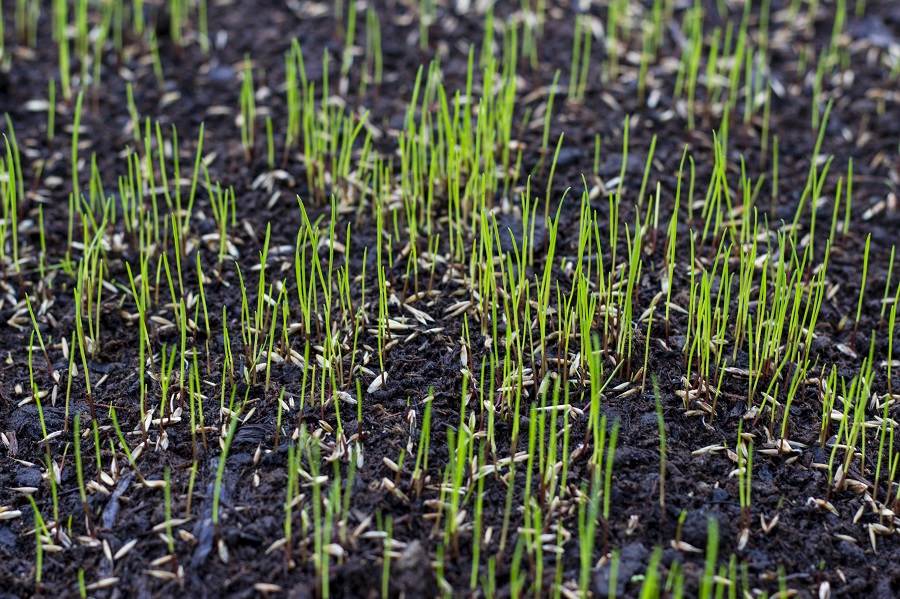
Tip #3: Seed Your Lawn Correctly
One of the biggest ways in which turf plantings fail is because the homeowner didn’t seed correctly, or they didn’t provide enough care beforehand or afterward. Turf grass seed is small, thin, and requires some babying when you put it down.
First, it’s best to seed in either the spring or the fall – depending on your growing region. Ideally, the temps will be a little cooler (don’t seed on a week when it’s 102 degrees!) and there will be adequate moisture for your grass to take off. In general, northern states should seed in the spring or fall, and southern states should shoot for spring or early summer. Give us a call if you have specific questions about when you should seed for your area.
Second, prepare the seeding area and soil by removing old sod and eliminating weeds. Along with this, you should do a soil test so that you know how much starter fertilizer to apply as well as whether you need to amend your soil’s pH. If you need to adjust your soil’s pH, be realistic and understand that this will probably take several months. Soil pH doesn’t change overnight! We often recommend that folks get a soil test the year BEFORE you plan to seed your lawn so you have adequate time to make soil adjustments.
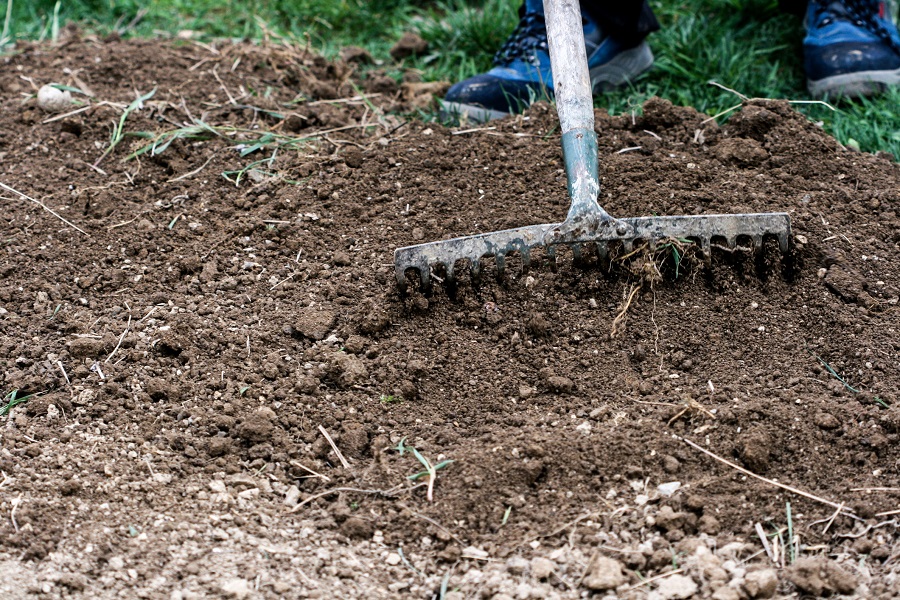
Third, when planting seed, achieve good seed-to-soil contact through raking and rolling after you seed. Grass seed is small and thin and can dry out quickly. You can use a drop seeder or a broadcaster to seed your lawn, but make sure to lightly rake your lawn afterward and then roll the area to ensure good seed-to-soil contact. Remember: seeds take water in passively by touching the soil around them. If your grass seed is only lightly resting on the soil surface, it doesn’t matter how frequently you water it – it will dry out too quickly. So, make sure to rake and roll your seed after planting it!
Fourth, keep your turf seeding area moist but not soaking wet! This is a delicate balance here between helping the seed take in water and preventing it from rotting. On sloped areas, it may help to put down thin layers of straw, mulch, or erosion blankets to prevent runoff of your seed. These also have the benefit of keeping the soil moist, so you don’t need to water quite as much. As the seed begins to germinate and grow, you can slowly transition from frequent, light watering to infrequent, deep watering. This helps the seedlings develop strong, deep root systems.
Fifth, wait a while before you mow for the first time or start walking all over it. Once your seedlings are between 3 and 4 four inches tall, you can mow them – but don’t overdo it! See the next section for more information on mowing. If you seed in the fall, you may need to wait until spring to mow. Also, give your grass some time before you start walking all over it. Block the area off and avoid walking on it as much as possible for the first few months, or even it’s first season.
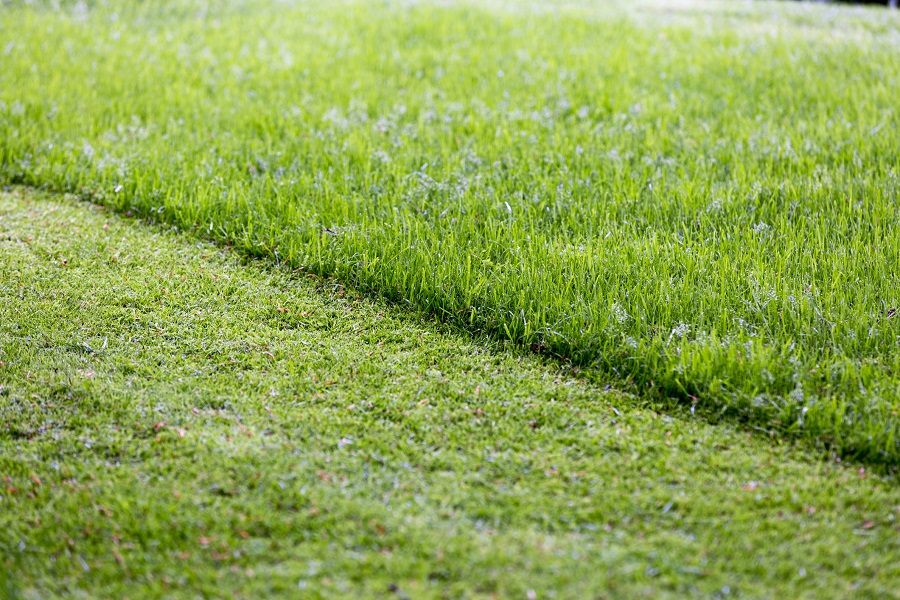
Tip #4: Mowing and Irrigation Affect Turf Health
Mowing is a subject that deserves its own article. We don’t have the space to launch into an in-depth tutorial on mowing. However, here’s a great slideshow that will walk you through some of the nuanced tips for mowing like a pro.
The general rule in the lawn turf industry is never to remove more than a third of the grass blade when you’re mowing. Think about it like this: each grass blade is an organ of the overall grass plant and it works with the sunlight to create energy and food for the grass plant. When you lop off half or more of that blade, you’ve just stunted that plant’s ability to create energy and food. And now, the grass plant has to expend even more energy and resources to grow new grass blades.
By mowing too low (or too soon after planting), you are increasing your lawns susceptibility to disease, pests, drought injury, and winter die-off. Besides, if you’re not running a golf course, you don’t need inch-and-a-half tall lawns!
Also, keep your mower blades sharp and clean. When you’re cooking in the kitchen and using a dull knife, it’s hard to cut vegetables, right? The knife makes uneven cuts and leaves you with jagged chunks of veggies (and maybe a nick or two on your fingers!). The same applies to lawns.
When you mow your lawn with dull mower blades and you don’t clean your mower, you’re creating unnecessary damage to the grass and you’re potentially spreading disease and pests from one season to the next. Sharpen your blades every year and clean your mower at least a few times throughout the summer to minimize long-term damage to your grass (and increase the longevity of your mower!).
As for irrigation, this one is a little easier. It’s better to water in the mornings as opposed to during the day or at night. And you should aim for infrequent, deep watering as opposed to frequent, shallow watering.
Watering in the early morning is best because it’s still cool enough that the water has time to soak in and be used by the plants before it evaporates due to the heat and strong sunlight of the day. However, it’s important that the excess water evaporates because it can cause pest and disease issues if the grass blades never dry off. If you water during the daytime, you’re losing a lot of water to evaporation before it can even benefit your grass. And if you water at night, you create a damp environment that never dries off – a perfect home for mold and bacteria to thrive.
Tip #5: Soil Tests and Fertilizers Should Be Used Together
Last, but definitely not least, get a soil test on your lawn every 2 or 3 years. Don’t just walk out there and apply fertilizers every year, willy-nilly, without knowing what your soil and grass actually needs. And don’t waste your money on a lawn chemical company to do the same thing either. Without a soil test, you can’t actually tell (just by looking at your soil or your lawn) whether the fertility levels are low or high. You also can’t tell what your soil pH is (whether the soil is acidic or basic).
There are a multitude of lawn fertilizers out there. For an in-depth tutorial on understanding a soil test and calculating how much fertilizer you need, read our blog on “How to Interpret a Soil Test”, which will walk you through some basics of understanding fertilizers.
Soil tests are inexpensive, and most state universities have a soil testing lab with a specific turf test that you can do for your lawn (and stay tuned, because Deer Creek Seed plans to offer a turf soil test soon!) We recommend calling your local Extension office or county NRCS office for recommendations on nearby soil testing labs.
If you’ve done a soil test, follow the recommendations but don’t worry about meeting them exactly. These are guidelines, not hard and fast rules. When in doubt, don’t over-apply fertilizers or chemicals! Over-application of fertilizers or pH adjusting chemicals can cause long-term damage whereas under-application can be amended if deficiencies show themselves. In general, just getting close to what the soil test recommends will be good enough for 99.9% of the lawns out there.
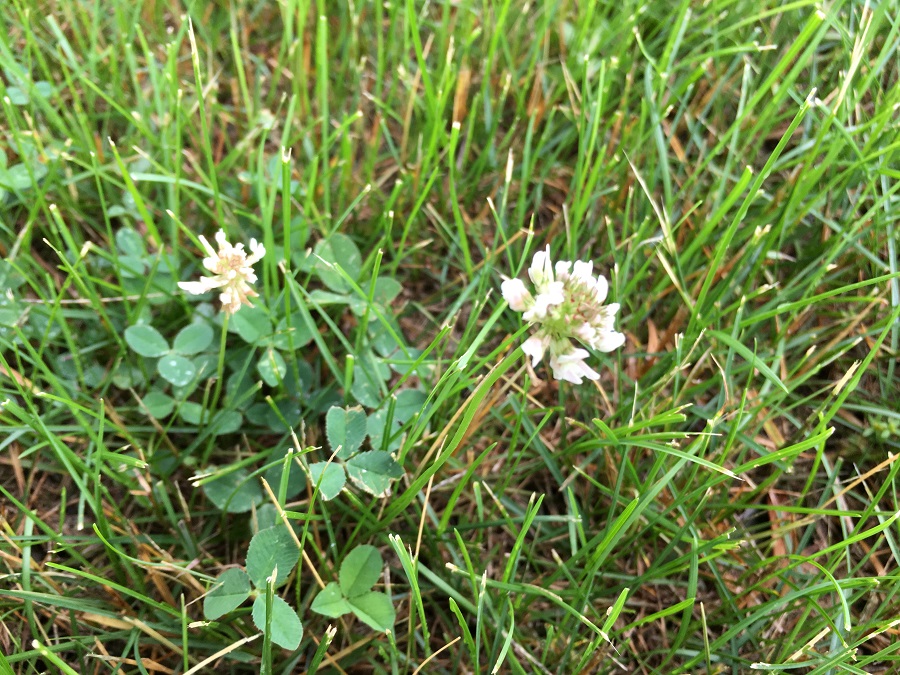
Also, you might consider trying out a lawn throw-back: incorporate some low-growing white clovers into your lawn, like Dutch white clover. A few decades ago, incorporating clover (or some other kind of legume) into lawn seed was common practice as a way to increase the longevity of the grass. Legumes fix nitrogen in the soil with their roots and can act as a small fertilizer boost to the grass, keeping it greener and healthier for longer.
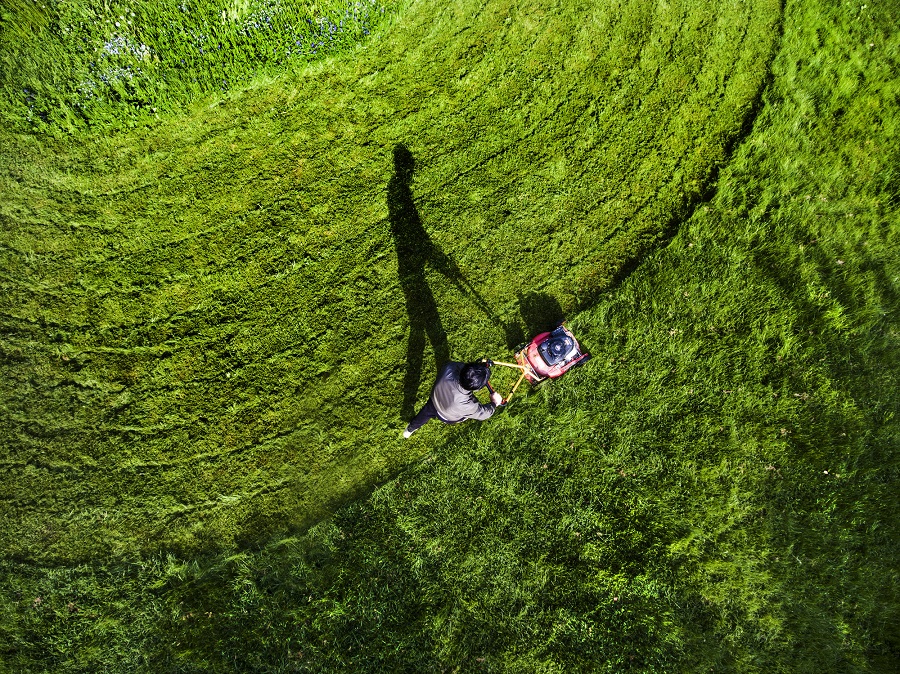
Another tactic is to mulch your lawn clippings and leave them on the grass. Think about it this way: those are nutrients that you would otherwise be removing. Leave them be and they will break down in the soil and provide extra nutrients over time.
Final Thoughts
This article covered a lot of diverse lawn care topics, and we didn’t even touch on seasonal cutting and irrigation regimes or pest control! For the average homeowner, the tips in this article will be good enough to get you on the right track for a healthier lawn.
As you drive around and see beautiful lawns, remember that a lot of work went into those lawns. Even if the homeowner of that perfect lawn says its easy – I promise they either love their lawns and don’t think of it as work or they pay a lot of money to a landscaper!
If you’d prefer to strive for moderation, use the tips we highlighted here, and you’ll be golden (or green, if you like!). If you have more specific questions about lawn care, please give us a call and we’d be happy to give you more information. Have a great summer!



